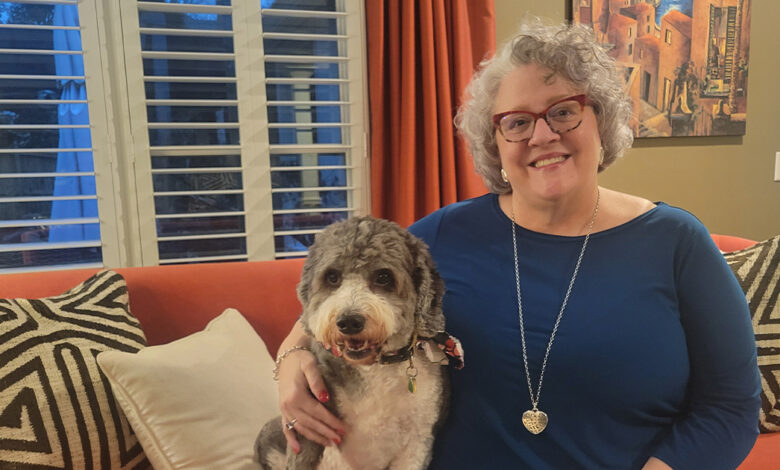RPM strategies for moving from discharge to hospital-at-home care

By 2030, all Baby Boomers will be over 65 – all as alternative care models emerge. McKinsey estimates $265 billion worth of care services for Medicare patients could shift from traditional facilities to the home by 2025.
Instead of thinking of patients as “discharged” once they leave the hospital, which implies care is finished, many healthcare professionals believe it’s time to treat home as a fundamental care setting that needs to be well integrated into the care continuum.
Cindy Gaines, RN, is chief clinical transformation officer at Lumeon, a clinical automation company. She says the focus should be switched from discharge planning to home care orchestration – which can reduce the cost of care and complications and earn favorable feedback from patients, caregivers and providers.
We interviewed Gaines to get a better understanding of what this switch entails and talk in-depth on hospital-at-home.
Q. What are the challenges for effective hospital-at-home coordination?
A. A variety of factors have given rise to more focus on hospital-at-home – the pandemic, persistent staffing shortages, rising costs, patient complications, such as delirium – leading CMS to increase financial incentives to provide care at home without reducing quality or access. While there are many benefits to having patients receive care in their own homes, it comes with a host of challenges.
Hospital-at-home is not a discharge from the hospital, it is providing the hospital level care in the home. This makes care coordination one of the top challenges given that it’s currently a manual, tedious and expensive process.
With hospital-at-home, this process piles on several additional layers of complexity, such as remote patient monitoring devices, patient-reported outcomes, nursing care, physical therapy, food, medication deliveries and more. Resources from specialties like cardiology and endocrinology to services like case management and social services are often siloed, making coordination even more difficult.
As organizations design clinical best-practice protocols for hospital-at-home programs, they need to also take into account the process for orchestrating everything that’s needed to achieve the best outcomes, using both internal and external resources, as well as appropriate reimbursement. Executing these protocols in a standardized way is challenging, which can lead to staff being burdened with unnecessary work and disconnects that cause delays, inefficiencies, gaps in care and payment denials.
Q. You say hospitals and health systems need to shift the focus from discharge planning to hospital-at-home care orchestration. What do you mean by this, and what will this shift accomplish?
A. For many years I have advocated for eliminating the term “discharged” from our healthcare vocabulary. We transition patients from the intensive care unit to the floor, but we discharge them from the hospital. The very term discharged, by definition, means to release from obligation. After the patient goes home, the hospital’s role in the inpatient care episode is considered complete.
On the other hand, by looking at the completion of an inpatient stay as a transition in care reinforces a less episodic, more holistic view of patient care. Home becomes one more care setting in the care continuum in which the patient manages their own care with support from providers in the ambulatory setting. This is at the core of population health.
With that said, hospital-at-home takes the home setting to an all-new level. Remember, it is not a discharge from the hospital; it actually is providing hospital-level care in the home by the inpatient care team.
So, what is the difference between discharge planning and home care orchestration? With discharge planning, the patient is going home to care for themselves. Details such as the patient’s transportation home, prescriptions, therapies and follow-up appointments are addressed to ensure a smooth transition home.
With home care orchestration, the team is coordinating the hospital care in the home, both clinical and nonclinical care. Everything from food service and housekeeping to daily nursing visits, transportation, medication administration and specialty consults, to name a few. And this home care orchestration is done on a daily basis for the patient in their home.
So why is this important? By shifting the focus from “discharge planning” to “home care orchestration,” health systems and payers can not only reduce the cost of care, but also reduce complications and earn favorable feedback from patients, caregivers and providers.
This requires a complex array of services, making it ripe for automating the manual workflow processes, tasks, activities and events that bring it to life. Clinical workflow automation addresses the challenges by standardizing processes, increasing efficiency and reducing administrative tasks.
Q. What roles do remote monitoring devices and telehealth visits play with this home care orchestration style of hospital-at-home?
A. With ongoing labor constraints, rising costs and the shift to care at home, healthcare organizations and patients alike have been embracing enabling technology. Remote monitoring and the use of telehealth are technologies that took off during the pandemic and are now a well-accepted care delivery modality.
Using remote monitoring devices for blood pressure, blood sugar, medication adherence and activity all make it easier for patients to track their metrics in the home, while making that data available to their providers. Data from these devices can be integrated into the EHR, giving providers access to information in real time to manage care remotely.
These technologies play a vital role in hospital-at-home by augmenting in-home visits with remote monitoring data and virtual visits, giving patients access to the full complement of hospital services – making services, such as a nephrology consult, case management, and mental health readily accessible to patients in their homes.
Q. What roles do in-home care and social services and nonclinical services such as medication deliveries and housekeeping play with home care orchestration?
A. The key to successful home care orchestration is the holistic view of what’s needed to achieve the best patient outcomes. The organization is providing hospital-level care in the home. This must include a full range of services, while taking into account each patient’s situation, such as care support at home, social determinants of health, mobility, language barriers, etc.
The orchestration challenges begin with identification of patients who could benefit from this care. These patients can be identified in the emergency room prior to admission or on the inpatient floor when they have improved enough to transition to home.
Either way, evaluating patients against specified requirements is often manual in nature, making it resource-intensive to identify patients and underutilization of the programs. Clinical workflow automation can ease this burden by electronically reviewing all patients and applying the criteria, real time, in both care settings and flagging the patients who meet the criteria.
This allows the staff to work directly with the right patients to obtain consent and begin the process of placement in the home.
Once at home, the key challenge is the orchestration of services – specifically, orchestration of nonclinical services, for example, food service, pharmacy delivery, housekeeping, home setup and ancillary services. Currently, hospital-at-home services often use clinical resources to manually coordinate nonclinical services.
With limited resources in our current healthcare environment, we need to think about utilizing solutions such as clinical workflow automation to support both the care team and the patient by adapting to the patient’s needs, while ensuring nothing falls through the cracks.
An example is using automation to communicate to the food delivery team that the patient is currently getting an MRI at the hospital and to not deliver food to the patient’s home until 2 p.m. This may seem like an insignificant example.
But now we are talking about patient experience, food quality, medication implications and inefficiency for the team. It is not like bringing a tray from the kitchen to find the patient not in their room and coming back later. Someone is bringing food from across town. It needs to be there at the right time.
Coordinating the right information to the right teams at the right time is labor intensive. The use of clinical workflow automation in home care orchestration frees up people resources while ensuring that the patient’s needs are met on time.
With our aging population in the U.S., the concept of discharging patients needs a refresh. Expanding the care continuum to integrate care at home will improve patient care outcomes, clinician satisfaction and financial performance.
Follow Bill’s HIT coverage on LinkedIn: Bill Siwicki
Email him: [email protected]
Healthcare IT News is a HIMSS Media publication.

